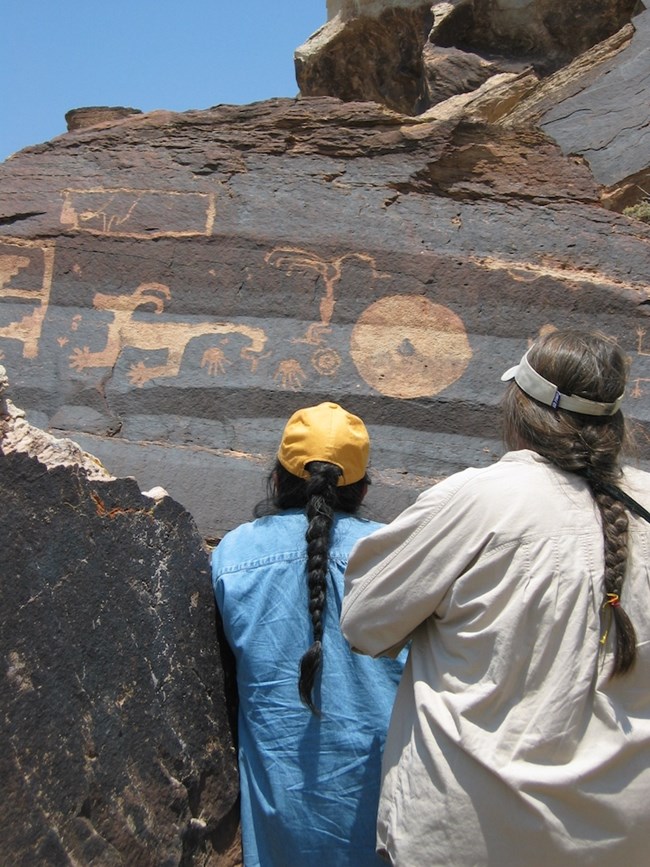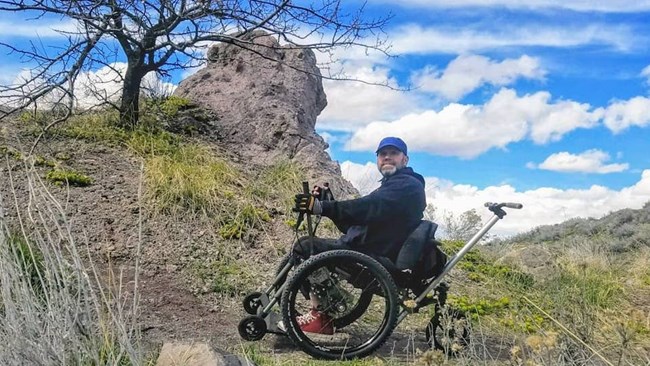Last updated: May 16, 2024
Article
This is Federal Wilderness

Left to right: NPS, Dave Gillespie, NPS, NPS
The Wilderness Act of 1964 established the National Wilderness Preservation System (NWPS) and provides the highest level of protection for some of our most wild landscapes through federal wilderness designation. The NWPS protects over 111 million acres of federal public land through wilderness designation, managed by the National Park Service (NPS), Bureau of Land Management, US Fish and Wildlife Service, and US Forest Service.
General use of the word 'wilderness' can mean different things to different people. Because federal wilderness refers to a specific concept described in the Wilderness Act, there are some shared meanings of wilderness that apply to every NPS wilderness area. Here are some of those shared ideas, that when considered, help us to further develop our own personal connections to these public places.

NPS
Wilderness is not a pristine and untouched landscape.
Federal wilderness areas are the homelands of many Indigenous peoples. The rich cultural traditions of Indigenous people, and later immigrants, have existed on and with the landscape long before the establishment of national parks and federal wilderness areas.
Avoiding use of descriptors like ‘pristine’ or ‘untouched’ when describing wilderness demonstrates that we recognize the longstanding role of people on now-wilderness lands. It is imperative to recognize that what we see today is the culmination of thousands of years of intentional land stewardship by the many people connected to these places.
Want to learn more about some of these connections? Read about different wilderness heritage stories, including Huna Tlingit views of wilderness as homeland in Glacier Bay National Park and Preserve.

Dave Gillespie
Yes, people are allowed to go into wilderness.
People are not only allowed but encouraged to go into federal wilderness! Did you know the Wilderness Act states that wilderness areas “shall be administered for the use and enjoyment of the American people” and that recreation is one of the public purposes of wilderness? This means recreation is fundamental to wilderness and wilderness recreation opportunities are available to everyone.Wilderness protects fresh air, clean water and other attributes important to our physical and mental health. Wilderness gives us a place to unplug and take a break from the busy world around us. Wilderness areas are some of the best places for scientists and students to learn from our natural world and apply findings to improve how we live, play, and work.
For more inspiration, check out this video of a family hiking in the wilderness of Zion National Park and researchers studying evidence of dinosaurs in the wilderness of Petrified Forest National Park.

NPS
You don't have to be a mountaineer to enjoy wilderness.
Mountaineering is welcome, but not required to enjoy the wilderness! Opportunities for exploring wilderness are as diverse as the landscapes and the people of our country. From walking, hiking, climbing, and paddling to horseback riding, fishing, hunting, skiing, and snowshoeing, wilderness is a place to make unforgettable memories with family and friends or find solitude for yourself. In these activities, wilderness provides space to seek personal fulfillment like mental and physical health, artistic inspiration, and adventure. Your choice. Your style. You're ready!
Whether visiting wilderness for the first time or fifty-fifth time, planning is key for a fun and safe adventure. You can have a safe and positive experience in wilderness that matches your skill and experience level.
New to wilderness? Join this group of students as they take their first wilderness trip to the Death Valley Wilderness. And be sure to visit the NPS Wilderness and Backcountry Camping site to learn more about options for overnight stays.

NPS
Wilderness is closer than you might think.
Enjoying wilderness doesn’t have to mean a long road trip to a distant, rugged place. From Miami to Denver, Los Angeles to Tulsa, many NPS wilderness areas are within a few hours drive of America’s largest cities. New York City is only two hours from the wilderness in Fire Island National Seashore.
Wilderness is a place to rejuvenate and awaken your senses. Visiting wilderness inspires the feeling of being part of something larger than one’s self. Even from a distance, wilderness has the power to renew us just by knowing such wild places exist.
Is it possible to feel connected to a wilderness area that many other people love too? Yes! Think about your favorite wilderness area: what do you appreciate most about it? Chances are you enjoy seeing and hearing nature uninterrupted - plants, animals, sounds. Perhaps you like knowing that you may not see many people on the trail or other signs of heavy human use. Or maybe you enjoy a focused sense of connection with nature and your loved ones while out in wilderness. These things are made possible, in part, by visitors that make conscientious choices to enjoy wilderness while minimizing their personal impact on the area. Leave No Trace helps promote these behaviors and offers ways for visitors to be informed, thoughtful wilderness stewards.
